4-Benzyl-2-(naphthalen-1-yl)-[1,2,4]thiadiazolidine-3,5-dione
Synonym(s):4-Benzyl-2-(naphthalen-1-yl)-[1,2,4]thiadiazolidine-3,5-dione;NP031112;NP-12
- CAS NO.:865854-05-3
- Empirical Formula: C19H14N2O2S
- Molecular Weight: 334.39
- MDL number: MFCD18633296
- EINECS: 640-411-8
- SAFETY DATA SHEET (SDS)
- Update Date: 2025-12-26 16:58:18
![4-Benzyl-2-(naphthalen-1-yl)-[1,2,4]thiadiazolidine-3,5-dione Structural](https://img.chemicalbook.in/CAS/GIF/865854-05-3.gif)
What is 4-Benzyl-2-(naphthalen-1-yl)-[1,2,4]thiadiazolidine-3,5-dione?
The Uses of 4-Benzyl-2-(naphthalen-1-yl)-[1,2,4]thiadiazolidine-3,5-dione
Tideglusib is used in the treatment of brain atrophy, and movement disorder issues.
The Uses of 4-Benzyl-2-(naphthalen-1-yl)-[1,2,4]thiadiazolidine-3,5-dione
Tideglusib has been used:
- as a reference compound in ADP-GloTM Kinase assay
- as an allosteric inhibitor of GSK-3β to study its effects on myocardial remodeling and angiogenesis
- as a differentiation agent (specifically a glycogen synthase kinase (GSK)-3β inhibitor) to convert fibroblast cells into octamer-binding transcription factor-4 (OCT4)+ and vascular endothelial growth factor receptor-2 (VEGFR-2/fetal liver kinase-1 (FLK1)+ cells
What are the applications of Application
Tideglusib is used in the treatment of brain atrophy, and movement disorder issues.
As a reagent, Tideglusib has been used:
as a reference compound in ADP-GloTM Kinase assay
as an allosteric inhibitor of GSK-3β to study its effects on myocardial remodeling and angiogenesis
as a differentiation agent (specifically a glycogen synthase kinase (GSK)-3β inhibitor) to convert fibroblast cells into octamer-binding transcription factor-4 (OCT4)+ and vascular endothelial growth factor receptor-2 (VEGFR-2/fetal liver kinase-1 (FLK1)+ cells.
Definition
ChEBI: Tideglusib is a member of the class of thiadiazolidines that is 1,2,4-thiadiazolidine-3,5-dione which is substituted by a naphthalen-1-yl group at position 2 and by a benzyl group at position 4. It is a non-ATP competitive inhibitor of glycogen synthase kinase 3beta (GSK3beta) and has neuroprotective effects. Currently under clinical investigation for the treatment of Alzheimer's disease and progressive supranuclear palsy. It has a role as an EC 2.7.11.26 (tau-protein kinase) inhibitor, a neuroprotective agent, an anti-inflammatory agent and an apoptosis inducer. It is a member of naphthalenes, a member of benzenes and a thiadiazolidine.
Biological Activity
Tideglusib, also known as NP031112 or NP-12, is a potent non ATP-competitive inhibitor of glycogen synthase kinase-3 (GSK3), an important kinase studied in stem cell research and neurodegenerative diseases. It is currently in clinical trials for Alzheimer′s disease and Progressive Supranuclear Palsy (PSP). Tideglusib reduces phosphorylation of the tau protein and the accumulation of amyloid plaques, reduces hippocampal and entorhinal cortex neuron loss and improves spatial memory deficits. It has also shown neuroprotective and anti-inflammatory activity in a variety of animal models.
Biochem/physiol Actions
Tideglusib, also known as NP031112 or NP-12, is a potent non ATP-competitive inhibitor of glycogen synthase kinase-3 (GSK3), an important kinase studied in stem cell research and neurodegenerative diseases. It is currently in clinical trials for Alzheimer′s disease and Progressive Supranuclear Palsy (PSP). Tideglusib reduces phosphorylation of the tau protein and the accumulation of amyloid plaques, reduces hippocampal and entorhinal cortex neuron loss and improves spatial memory deficits. It has also shown neuroprotective and anti-inflammatory activity in a variety of animal models.
in vitro
in vitro studies showed that after the unbound tideglusib was removed from the reaction medium, the enzyme function could not be recovered. in addition, the dissociation rate constant of the reaction was as low as nearly zero. all above findings suggested that tideglusib blocked gsk-3 irreversibly. such irreversibility might be responsible for the non-competitive inhibition pattern with respect to atp of tideglusib and perhaps other structurally related compounds. [1]
in vivo
based on double transgenic mice model co-expressing human mutant app and tau, a study demonstrated that tideglusib could suppress gsk-3, reduced amyloid and tau pathologies, blocked neuronal cell death and memory deficits in vivo. [2]
References
[1]domínguez jm, fuertes a, orozco l, monte-millan md, delgado e and medina m. evidence for irreversible inhibition of glycogen synthase kinase-3 by tideglusib. j biol chem. 2012 jan; 287(2): 893-904.
[2]serenóa l, coma m, rodríguez m, sánchez-ferrer p, sánchez mb, gich i, agulló jm, pérez m, avila j, guardia-laguarta c, clarimón j, lleó a, gómez-isla t. a novel gsk-3β inhibitor reduces alzheimer's pathology and rescues neuronal loss in vivo. neurobiol dis. 2009 sep; 35(3): 359-67.
[3]del ser, t. phase iia
Properties of 4-Benzyl-2-(naphthalen-1-yl)-[1,2,4]thiadiazolidine-3,5-dione
| Melting point: | 148 - 150oC |
| Boiling point: | 511.3±43.0 °C(Predicted) |
| Density | 1.393 |
| storage temp. | 2-8°C |
| solubility | DMSO: >15mg/mL |
| form | powder |
| pka | -1.51±0.20(Predicted) |
| color | white to beige |
Safety information for 4-Benzyl-2-(naphthalen-1-yl)-[1,2,4]thiadiazolidine-3,5-dione
Computed Descriptors for 4-Benzyl-2-(naphthalen-1-yl)-[1,2,4]thiadiazolidine-3,5-dione
| InChIKey | PMJIHLSCWIDGMD-UHFFFAOYSA-N |
New Products
4,4-Difluoropiperidine hydrochloride tert-butyl 9-methoxy-3-azaspiro[5.5]undecane-3-carboxylate Indole Methyl Resin N-Isopropylurea N,N-Dicyclohexylcarbodiimide(DCC) MELDRUMS ACID 5-METHYLISOXAZOLE-4-CARBOXYLIC ACID Magnessium Bis glycinate Zinc ascorbate 1-bromo-2-butyne 2-acetamidophenol 9(10H)-anthracenone Erythrosin B, 4-Piperidinopiperidine 2-((4-morpholinophenylamino) (methylthio) methylene) malononitrile 2,4-dihydroxybenzaldehyde 3-(4-morpholinophenylamino)-5-amino-1H-pyrazole-4-carbonitrile Methyl 2-methylquinoline-6-carboxylate 2,6-dichloro-4-nitropyridine 4-Bromo-2-chlorobenzonitrile 2-(benzylamino)acetic acid hydrochloride 4-(tert-Butoxycarbonylamino)but- 2-ynoic acid 3,4-dihydro-2H-benzo[b][1,4]dioxepine 1-Phenyl-1-cycloprppanecarboxylicacidRelated products of tetrahydrofuran

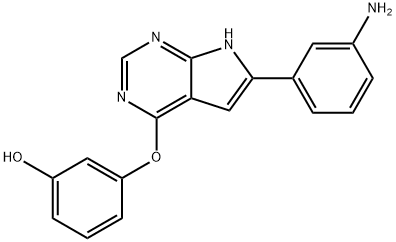
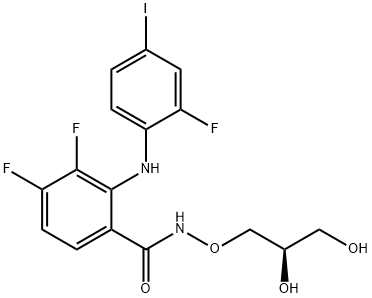
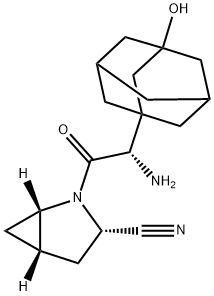
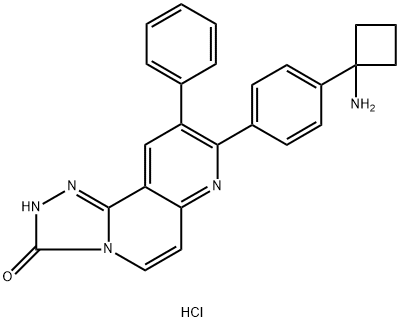
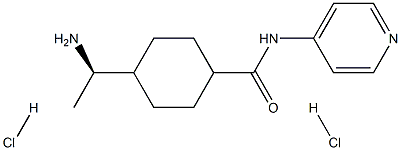

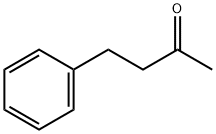
You may like
-
 Tideglusib CAS 865854-05-3View Details
Tideglusib CAS 865854-05-3View Details
865854-05-3 -
 3-(4-amino-1-oxoisoindolin-2-yl)-1-methylpiperidine-2,6-dione 98%View Details
3-(4-amino-1-oxoisoindolin-2-yl)-1-methylpiperidine-2,6-dione 98%View Details -
 614-19-7 98%View Details
614-19-7 98%View Details
614-19-7 -
 3112-85-4 Methyl phenyl sulfone 98%View Details
3112-85-4 Methyl phenyl sulfone 98%View Details
3112-85-4 -
 20677-73-0 (2,2-diethoxyethyl)methylamine 98%View Details
20677-73-0 (2,2-diethoxyethyl)methylamine 98%View Details
20677-73-0 -
 3-(4-(hydroxyamino)-1-oxoisoindolin-2-yl)piperidine-2,6-dione 98%View Details
3-(4-(hydroxyamino)-1-oxoisoindolin-2-yl)piperidine-2,6-dione 98%View Details -
 57381-49-4 2-bromo-4-chlorobenzonitrile 98%View Details
57381-49-4 2-bromo-4-chlorobenzonitrile 98%View Details
57381-49-4 -
 4,6-dichloropyrimidine-5-carbaldehyde 98%View Details
4,6-dichloropyrimidine-5-carbaldehyde 98%View Details
5305-40-8
